How this inner-city Winnipeg youth shelter helps kids struggling with isolation, trauma find community
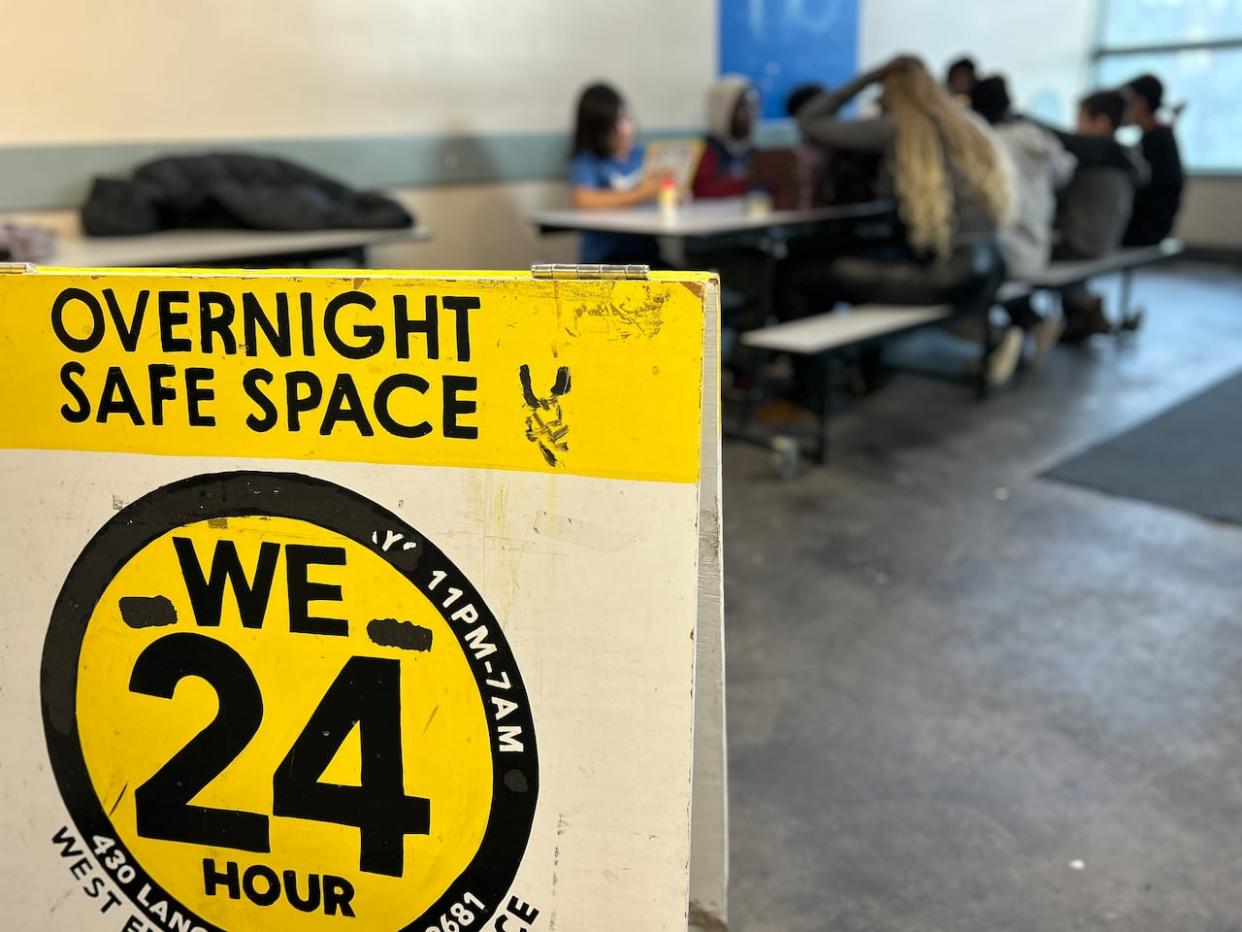
A tall man wearing jeans and a black sweatshirt stands still in a grey concrete hallway as others walk past. Burn scars cover most of his face, only partially visible because of a hoodie pulled tight.
"I'm treated like a ghost," says Casper Harper, 20.
"I don't rely on anybody. I'm basically a black sheep in every social situation."
It's 11 p.m. on a relatively mild Winnipeg night in January, and he's clutching a baggie with a sandwich in it. He's come to the West End 24 Hour Safe Space for Youth, in the inner-city Spence neighbourhood, for a bite.
On this night, he's not sleeping there like he did when he was homeless last June — a situation caused, he says, by a lack of caring and concern from the agencies that apprehended him. When he graduated from a housing program, his next steps were mismanaged, he says.
Harper says he keeps mostly to himself, but likes to drop by the safe space every once in a while for a meal.

The Magnus Eliason Recreation Centre is home to the safe space. (Warren Kay/CBC)
"[Whether] it's a sandwich or a Thanksgiving type of meal, it's always a great pleasure to be around here and get that safe kind of a feeling," he said.
Welcoming youth into the fold — in whatever way possible, whether it's through food or shelter or activities — is a way of life for the community hub at Magnus Eliason Recreation Centre, the Langside Street building that's home to the safe space.
Many youth, like Harper, come late at night, but during the day the space offers activities for younger kids.
It's always a great pleasure to be around here and get that safe kind of a feeling. - Casper Harper
In the late afternoon, dozens of children aged six to 12 run the hallways playing with friends, enjoying after-school snacks, colouring pictures or joining in a taekwondo workshop in the gym through a program called Building Belonging.
A 10-year-old boy — whom CBC is not naming to protect his identity — says he simply comes to draw and play with other kids.
Sometimes, he doesn't feel safe at school.
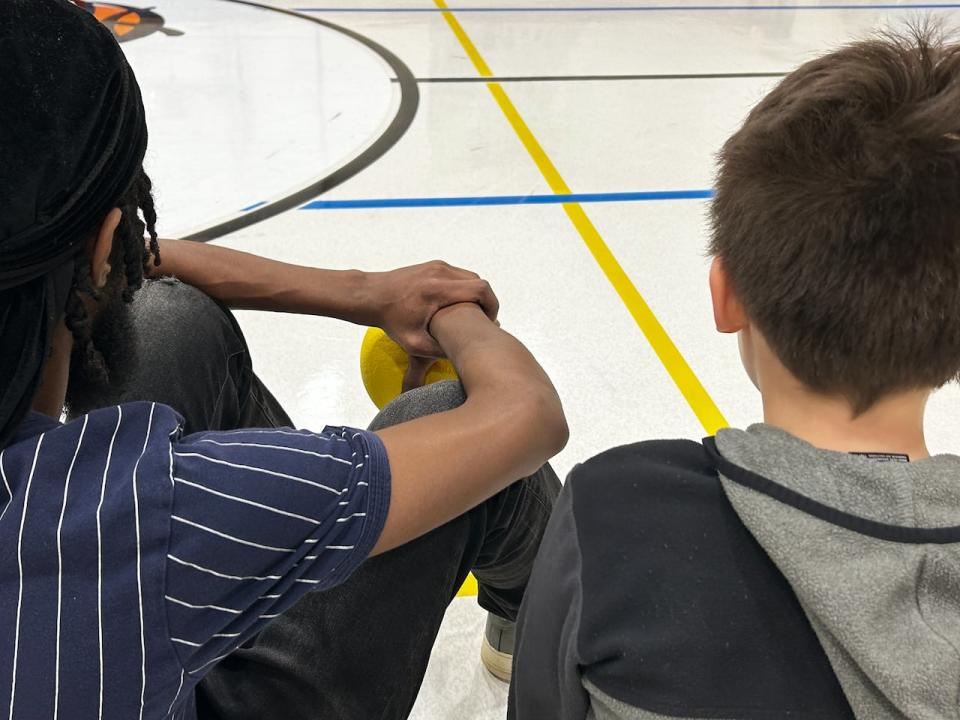
In the late afternoon, a program called Building Belonging offers activities for kids age six to 12. (Warren Kay/CBC)
"There's a lot of people bullying in my class. [The bullies] push people around, calling people names," he said. "It feels like I just wanted to go home."
At 5:30 p.m., the Building Belonging program ends. But a small boy — dressed in snow pants, a winter coat and a hat, with a Spider-Man backpack hanging off his shoulders — paces as he waits to be picked up.
He eventually is, but if he wasn't, the youth workers can provide safe rides home.
A safe place to eat
As dinnertime approaches, youth assistant manager Estella Marmah is preparing food for the teens who will be coming here to eat. A drop-in program starts at 6:30 p.m. for youth ages 12 to 18.
By 6 p.m., there are already more than 10 people waiting outside to come in. Once ready to open, a youth worker sits at a table at the entrance and signs everyone in.
Marmah stands in the lobby, serving dinner from a cart. The centre's commercial kitchen is closed for renovations, so she's cooking and serving makeshift meals. Tonight it's chicken burgers, french fries and drinks. About 30 teens drop by for food.

Estella Marmah prepares food for teens who come to the space at dinnertime. (Warren Kay/CBC)
Two girls arrive together. One is a 16-year-old CBC is calling Nadine, in order to protect her identity. She's short, with a small frame and long, straight brown hair.
Her friend, whom CBC is calling Paula, is 14. She's wearing a cropped tank top and jeans, and her arms and hands are covered in hand-poked tattoos. She laughs easily.
The girls, who are close friends and often repeat each other, say they've come tonight for the food. They grab plates and sit together.
They feel safe here, but Nadine says that's not the case at her home.
"It's just straight-up toxic. And I hate everyone in it," she said.
You have to learn how to fight. - Nadine, 16
It feels most unsafe at home "when they're doing drugs in the house or drinking," she said. "But then I just leave the house, so it doesn't even matter."
Paula says that she only feels unsafe when she doesn't have a weapon, like a "strap, machete or like a long knife."
Nadine chimes in: "Like a kitchen knife, but just like bigger, longer, sharper, and just does a lot more damage."
Nadine learned how to make weapons and how to use weapons while growing up.
"You have to learn how to fight," she said.
Nadine and Paula are both expelled from school for getting into too many fights. Nadine says one fight she had put two girls in the hospital. Charges were laid, then dropped, she says.

A drop-in program starts at the rec centre at 6:30 p.m. for youth ages 12 to 18, where they're offered something to eat. (Warren Kay/CBC)
Nadine says she felt the need to resort to violence when the girls she fought were staring at her, making her angry.
"I felt shaky at first, and then my hands started sweating, and then I just hyped myself up and that's when it all happened. It all happened so fast. I know I got a lot of [enemies] out there. "
She's been out of school for over a year and is still waiting for a call telling her she can come back.
"They didn't call me. Didn't tell me if I could go or not. Just didn't bother," said Nadine.
Finding connections with troubled kids
Apid Gurung is the youth manager for the Spence Neighborhood Association — which runs programming at the rec centre like workshops, activities and outings for the youth program, and the overnight shelter.
On this particular night, there's a ribbon skirt-making workshop in the multipurpose room upstairs and a basketball game in the gym.
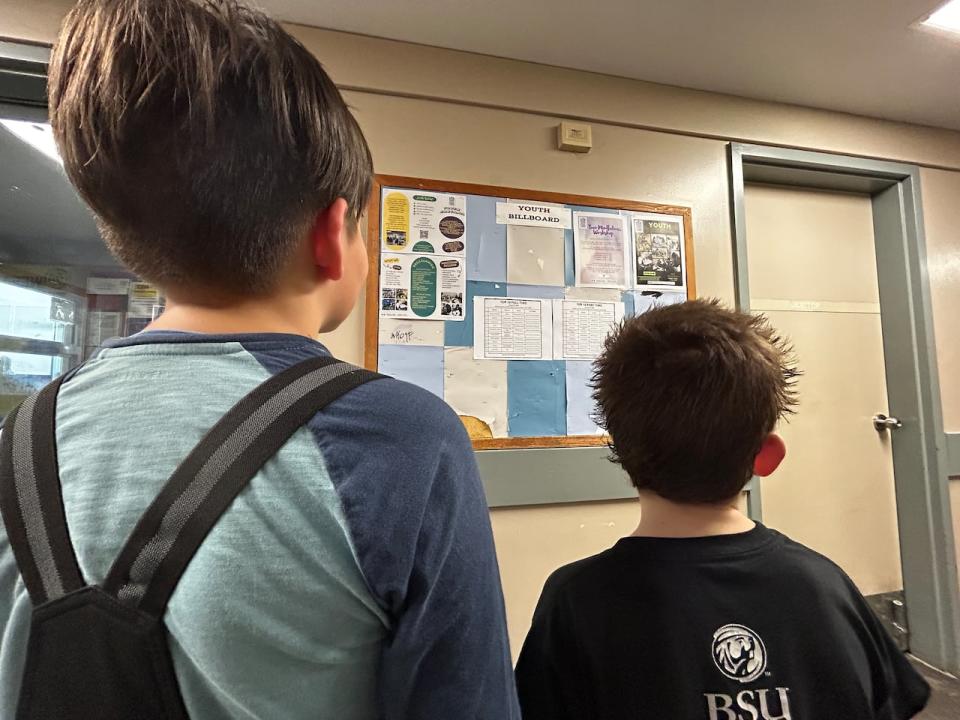
The safe space offers a range of programming for kids, like workshops and outings for the youth program. (Warren Kay/CBC)
Gurung says it takes work and effort to draw in youth like Brad, a 17-year-old high school senior.
Brad (an alias CBC is using to protect his identity) stopped coming to the youth program when the pandemic hit, even though there was still limited programming running at the time.
Gurung knew the teen was isolated at home — he lived down the street and rarely left his computer.
The key to getting Brad back was finding out what he was passionate about, says Gurung — in his case, basketball.
When Gurung brought back a youth basketball mentorship program, Brad started showing up.
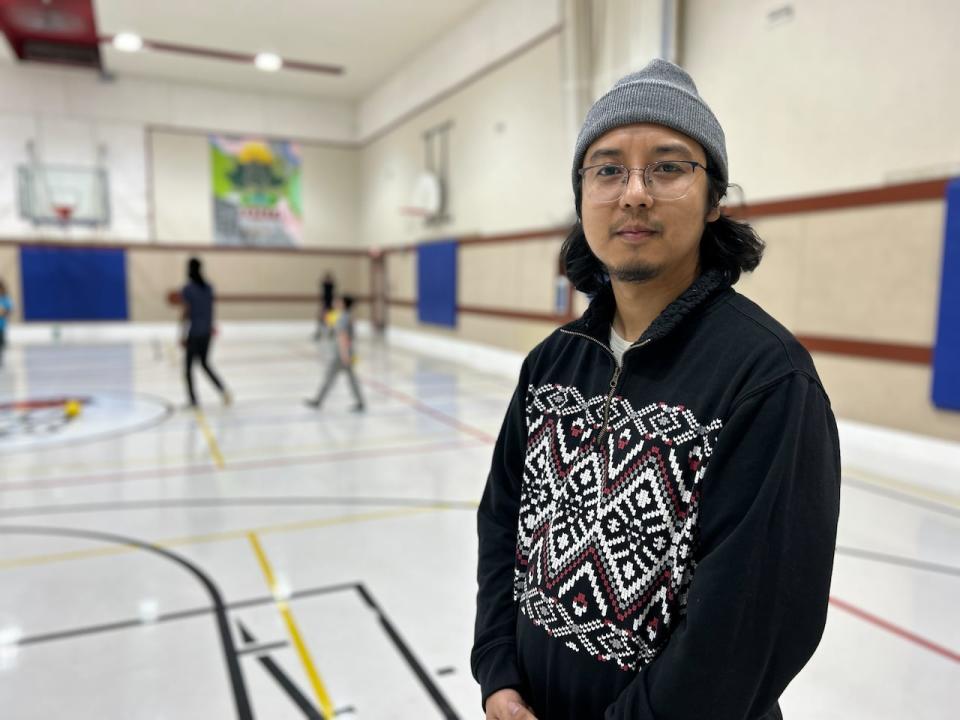
Apid Gurung, youth manager for the Spence Neighborhood Association, runs programming at the rec centre. (Warren Kay/CBC)
"It drastically changed his behaviour, from being a guy who was always in his room on his computer to now he's, like, volunteering," said Gurung.
Brad says he came back for more than the sports.
"It feels good. It makes me happy. Meeting new people and making new friends — this is the way I want to be," he said.
After graduation, Brad plans to coach for one of the basketball teams. But he worries about his 15-year-old cousin, who bullies other kids and started his own gang.
The cousin used to attend the drop-in program. Brad says he noticed a worrying change in behaviour when the cousin moved to his mother's house.
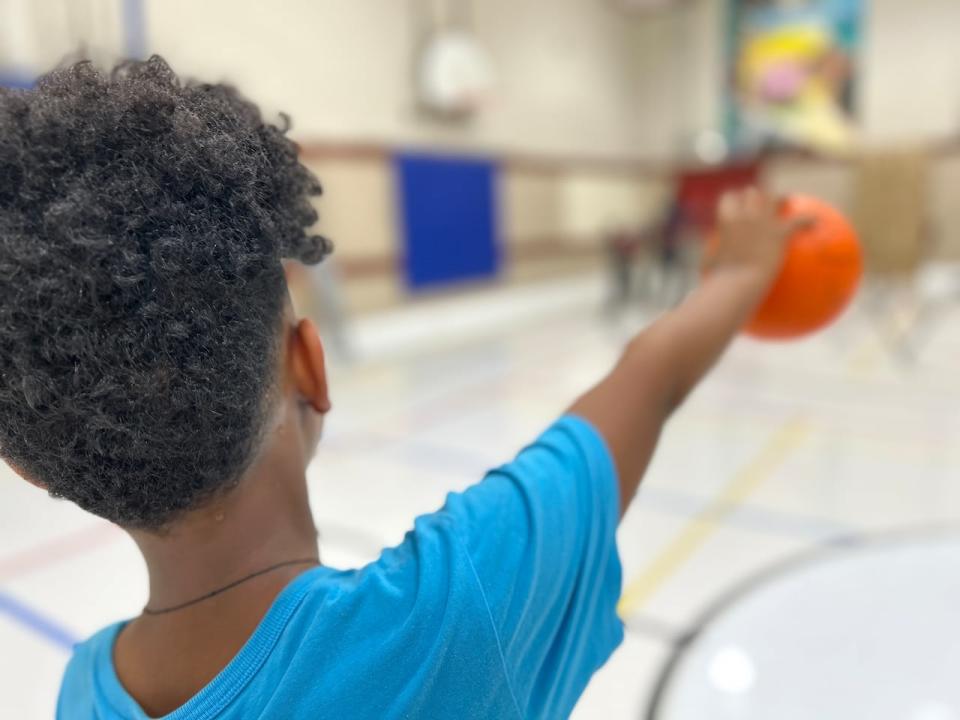
The centre offers youth basketball mentorship, among other programs. (Warren Kay/CBC)
"His mom has a lot of people that has a lot of violence lately, so he's a dropout. He created a gang for him and for his friends," said Brad.
Pandemic affected 'healthy building blocks'
The precursors to youth violence can often be traced back to trauma, violence, isolation or alienation, and frequently, involvement in the child welfare system.
Leena Augimeri, a child and youth mental health specialist who tracks youth violence data, says she's seen an uptick in incidents in recent years that she attributes to a variety of reasons, including isolation during pandemic restrictions.
"They were at home. They couldn't play with their friends, get the normal things when we think of social determinants of health and healthy building blocks," said Augimeri, who is the director of the Child Development Institute in Toronto.
"Relationships and attachment and their friends, and community, safety and education — those were all impacted."

'Relationships and attachment and their friends, and community, safety and education — those were all impacted' by the pandemic, says Leena Augimeri, a child and youth mental health specialist. (Warren Kay/CBC)
As well, "family violence issues escalated, so when you think about what our kids are witnessing, what they're experiencing, what happens to them matters," said Augimeri.
Typically, there's about seven years of warning before a troubled child may become a serious violent offender, she said.
"What is so critical is to think about [is] how many individuals, how many adults, how many educators, family members, community, were surrounding that child between those seven years," she said.
"We have to think strongly about how we create safe and thriving environments for all our children."
A warm place to sleep
At 11 p.m., the Magnus Eliason Rec Centre's gym converts into an overnight shelter for young people age 13 to 26. On this night, there are about 30 people waiting outside for the doors to open.
Two teenage boys ask for pillows and blankets, and walk down the hallway to the gym. The lights are dimmed. They set up their gym mats on opposite ends of the gym floor. One faces the wall; the other curls up under the duvet to sleep.

At 11 p.m., the Magnus Eliason Rec Centre's gym converts into an overnight shelter for young people. (Warren Kay/CBC)
The rec centre's office is busy, with people coming in and out. Some ask one of the seven youth workers on shift tonight for bus tickets, or grab a baggie with a sandwich or drink from the cooler stationed near the front door. Others talk to friends and staff or sit quietly alone. One teenage boy is agitated and pacing.
Gurung says the shelter tries to welcome anyone, including those who may be intoxicated by alcohol or drugs, as long as rules around safety are respected.
A young girl moving quickly and erratically goes into the bathroom. A worker follows after her. Other staff go in and out of the bathroom, and the girl is asked to leave.
Come the morning time, you have to tell them, 'You gotta go.' - Summer Prince, overnight shelter manager
She doesn't at first, but leaves after some quiet coaxing.
It's not clear what happened, but the energy changes in the room. People are tense. Staff are vigilant, lined up along the hallway.
Summer Prince, who manages the overnight shelter, says mornings are the hardest part of the night shift.
"It's really heavy, because you're welcoming folks in to sleep where they feel safe. Then come the morning time, you have to tell them, 'You gotta go,'" she said.
"It's really hard."
In the morning, staff work with youth on what Prince calls "system navigating" — coming up with a plan for the day if they aren't going to school. They look at what other resources may be open, such as other youth spaces, or help them set up appointments and co-ordinate transportation, providing bus tickets or arranging a safe ride.
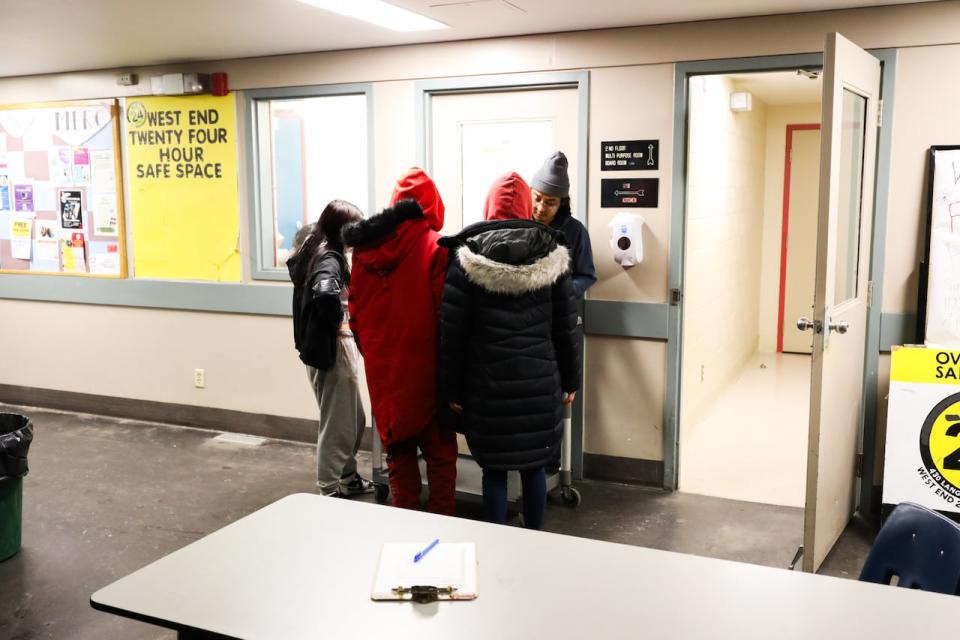
Gurung says it takes work and effort to draw in youth. (Prabhjot Singh/CBC)
There are other considerations with the younger teens who access the overnight shelter, said Prince, like trying to determine if their home isn't safe. There's also the challenge of determining if youth are in care, and if so, whether they're running from the foster system.
Sixteen-year-old Nadine doesn't want to go back to school, but says her father wants her to.
'There's always going to be violence in my life'
She regrets leaving her First Nation community back in 2015, when she was a young child.
"That was probably the worst mistake I ever made, because now I deal with a lot of trauma and shit," said Nadine.
"I can't be a kid. I had to act 16 when I was 12. I gotta take care of myself. I gotta feed myself... I gotta protect myself," she said.
"I was around people that did drugs all the time … people murdering people. Life was f–ked up."
She doesn't see a future without violence.
"I just think there's always going to be violence in my life. I just deal with too much trauma. I feel bad…. It hurts. But I'm still here. Crazy."
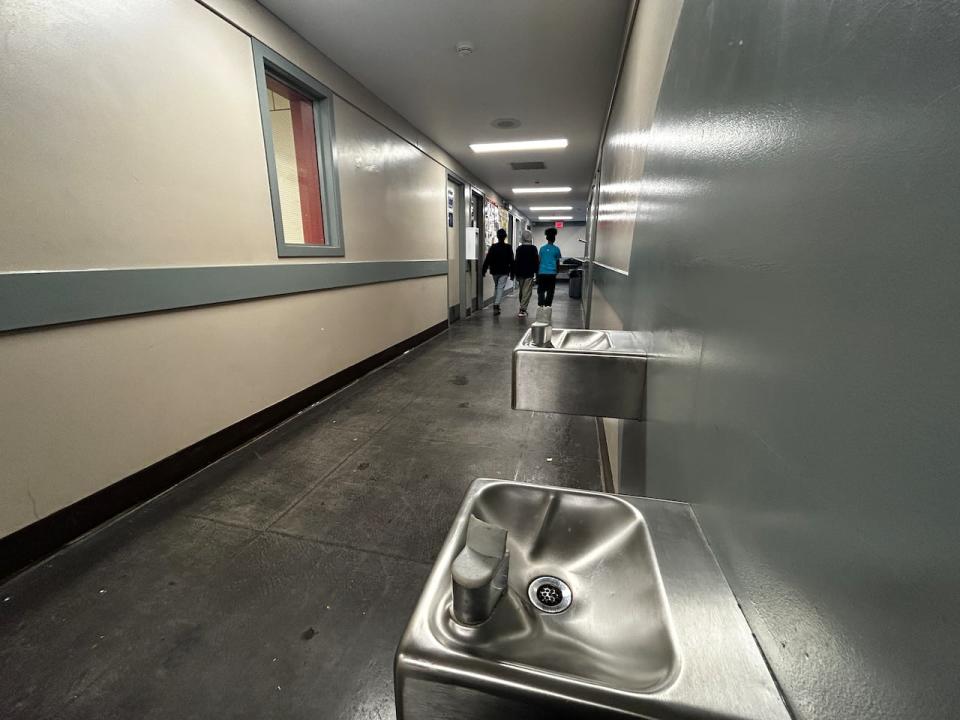
Some of the program participants CBC talked to say they feel safe here, but that's not the case at their homes. Nadine, 16, says her home is 'just straight-up toxic. And I hate everyone in it.' (Warren Kay/CBC)
Meanwhile, Casper Harper doesn't want to talk about violence in his own life — but acknowledges it's something that's hard to escape on the streets.
A few days earlier, he says he witnessed three men assaulting a woman in the middle of a busy street near the recreation centre. Harper tried to intervene but one of the attackers who was, as Harper says, "not in his right mind," punched him twice in the face.
"It's just not right. And I became a victim right after that escalated because I was trying to stop the situation from happening," he says.
But he's also hopeful that he's starting to find his own way in the world outside the youth centre.
He's now in school where he's taking Grade 11 and 12 math.
"They are doing a very good job at supporting me. They're my community. They have been treating me very well.
"It makes me feel optimistic about my future."

Lists showing the centre's current programming. (Warren Kay/CBC)


